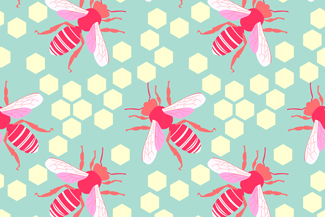Can wasps make deductions?
 Michael is shorter than Daniel and Daniel is shorter than Jennifer, so Michael is shorter than Jennifer. From 4-5 years of age, children are able to reach this conclusion through something known as transitive inference. This logical reasoning has also been demonstrated in vertebrate animals (monkeys, rats, birds, and fish). For the first time, a study has shed light on this capacity for deduction in an invertebrate: the paper wasp. Here’s how...
Michael is shorter than Daniel and Daniel is shorter than Jennifer, so Michael is shorter than Jennifer. From 4-5 years of age, children are able to reach this conclusion through something known as transitive inference. This logical reasoning has also been demonstrated in vertebrate animals (monkeys, rats, birds, and fish). For the first time, a study has shed light on this capacity for deduction in an invertebrate: the paper wasp. Here’s how...As the authors of this research point out, animal species that show complex social behavior seem to be the most likely to develop transitive inference. In invertebrates, the skill has already been studied unsuccessfully in honeybees. While honeybees live in large, social colonies, this factor alone doesn’t seem to have allowed them to develop deductive reasoning abilities. Another explanation is that honeybees have a small nervous system that limits their cognitive capacities, preventing them from making transitive inferences.
In the present study, a team of scientists at the University of Michigan wanted to test this hypothesis, choosing paper wasps (dominula and metricus), which have a brain and nervous system similar in size to bees (apis mellifera), composed of approximately one million neurons. Wasps however have a more complex form of social behavior, living in cooperative societies where the founding queens compete to form stable hierarchies.
To test the wasps’ ability to make transitive inferences, the researchers used a 5-step training procedure. The insects were trained for five days on five colors (arbitrarily marked A, B, C, D, and E) First, they were taught to distinguish between pairs of colors (A vs B, B vs C, C vs D and D vs E) In each of these pairs, one of the colors was coupled with a slight electrical shock while the other was not. The protocol involved placing the wasp in the middle of a rectangle. The good stimulus and bad stimulus were located on either side of the rectangle. The floor was electrified everywhere except the 2.25 cm closest to the good stimulus. The wasps were allowed to walk around the rectangle, training the insect to distinguish between the stimulus (color) associated with a light electrical shock and the painless one, in various situations. The wasps were then tested on new color pairs without any prior training (B vs D; A vs E). The hypothesis was that if the wasps used logical reasoning by implicitly organizing stimuli hierarchically and made transitive inferences to choose a color in an unfamiliar pair, they should choose B more often than D and A more often than E.
The results show that the wasps reused what they learned during training (and that they remembered it!), choosing the right color more often than predicted by chance. This preference for colors A and B provides important evidence that the wasps can prioritize stimuli (colors here) and make a transitive inference in order to choose the right stimulus in a new context (new pair of colors).
According to study co-author Elizabeth Tibbetts: “We’re not saying that wasps used logical deduction to solve this problem, but they seem to use known relationships to make inferences about unknown relationships. Our findings suggest that the capacity for complex behavior may be shaped by the social environment in which behaviors are beneficial, rather than being strictly limited by brain size.”
Source: Elizabeth A. Tibbetts, Jorge Agudelo, Sohini Pandit and Jessica Riojas, Transitive inference in Polistes paper wasps, in Biology Letters, May 2019 // University of Michigan website: Paper wasps capable of behavior that resembles logical reasoning. https://news.umich.edu/paper-wasps-capable-of-behavior-that-resembles-logical-reasoning/







